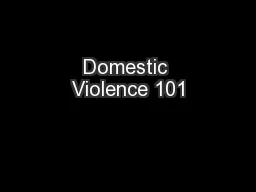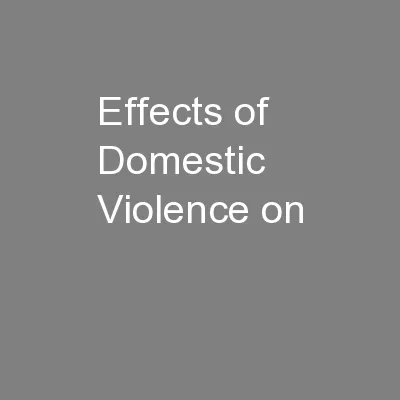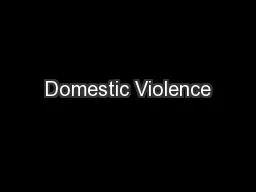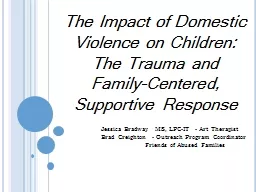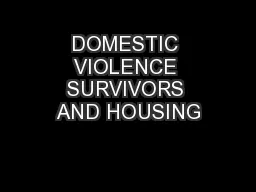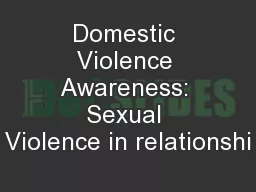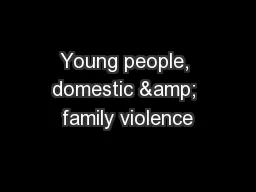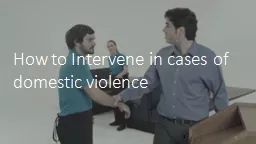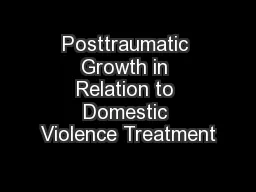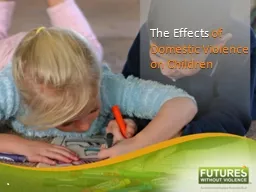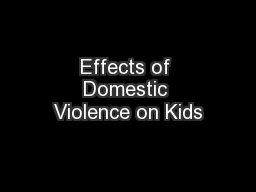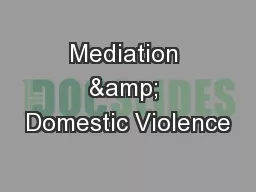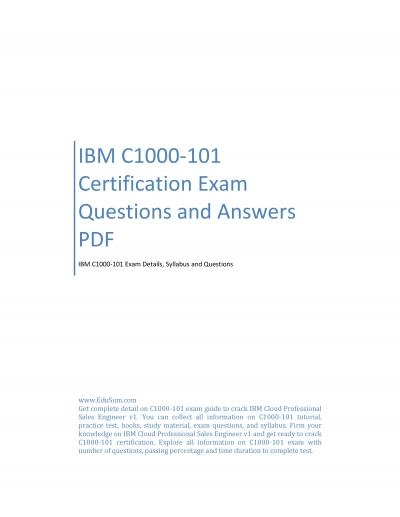PPT-Domestic Violence 101
Author : debby-jeon | Published Date : 2017-11-19
and its Impact on Young Children Tyshaunda Wiley Prevention Coordinator Presented 12142016 to the Early Childhood Collaborative of Southington Our mission is dedicated
Presentation Embed Code
Download Presentation
Download Presentation The PPT/PDF document "Domestic Violence 101" is the property of its rightful owner. Permission is granted to download and print the materials on this website for personal, non-commercial use only, and to display it on your personal computer provided you do not modify the materials and that you retain all copyright notices contained in the materials. By downloading content from our website, you accept the terms of this agreement.
Domestic Violence 101: Transcript
Download Rules Of Document
"Domestic Violence 101"The content belongs to its owner. You may download and print it for personal use, without modification, and keep all copyright notices. By downloading, you agree to these terms.
Related Documents

